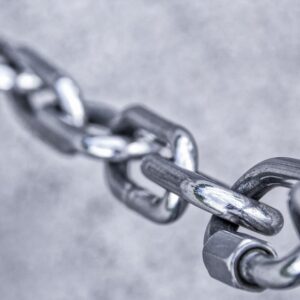The Controversy of Dog Chains: Are They Harmful or Helpful?
Dogs have been man’s loyal companion for thousands of years, providing love, companionship, and protection. However, as much as we love our furry friends, there is a debate surrounding the use of dog chains to restrain them. Some argue that dog chains are harmful and inhumane, while others believe they are necessary tools to keep our pets safe and secure. So, what is the truth behind this controversy? Are dog chains harmful or helpful?
On one side of the debate are those who argue that dog chains are harmful and inhumane. They believe that chaining a dog restricts its movement and can lead to a range of physical and psychological issues. Dogs are naturally social animals that thrive on interaction and stimulation, and chaining them can lead to boredom, frustration, and even aggression. In addition, dogs that are constantly chained can develop physical ailments such as neck injuries, skin irritations, and muscle atrophy. Moreover, dogs that are chained are more vulnerable to attacks from other animals and are unable to escape in case of emergencies such as fires or natural disasters.
Furthermore, opponents of dog chains argue that chaining a dog goes against their natural instincts and behavior. Dogs are pack animals that rely on social interactions and hierarchies to thrive. By isolating a dog on a chain, we are depriving them of the socialization and mental stimulation they need to be happy and healthy. In addition, chaining a dog can inhibit their ability to explore and engage with their environment, leading to a lack of mental and physical exercise. This can result in behavioral issues such as anxiety, aggression, and depression.
On the other side of the debate are those who believe that dog chains are necessary tools to keep our pets safe and secure. They argue that chaining a dog can prevent them from running away, getting lost, or getting into dangerous situations. In addition, chaining a dog can protect them from traffic accidents, attacks from other animals, and even theft. Some argue that chaining a dog can be temporary and is only used in specific circumstances, such as when the dog is unsupervised or in a public place where they may pose a danger to themselves or others.
Furthermore, proponents of dog chains argue that there are ways to ensure that chaining a dog is done in a safe and humane manner. They suggest using a long line or cable instead of a short chain, to give the dog more freedom of movement. They also recommend providing the dog with adequate shelter, food, water, and opportunities for socialization and exercise. In addition, proponents argue that chaining a dog is sometimes necessary for their own safety, such as when they have a tendency to escape or roam and are at risk of being hit by a car.
In conclusion, the controversy surrounding the use of dog chains is complex and multifaceted. While some argue that dog chains are harmful and inhumane, others believe they are necessary tools to keep our pets safe and secure. It is important to consider the individual needs and circumstances of each dog when deciding whether to use a chain as a restraint. Ultimately, the well-being and safety of our furry friends should be our top priority, and we should strive to find a balance between keeping them safe and allowing them to live happy and fulfilling lives.



